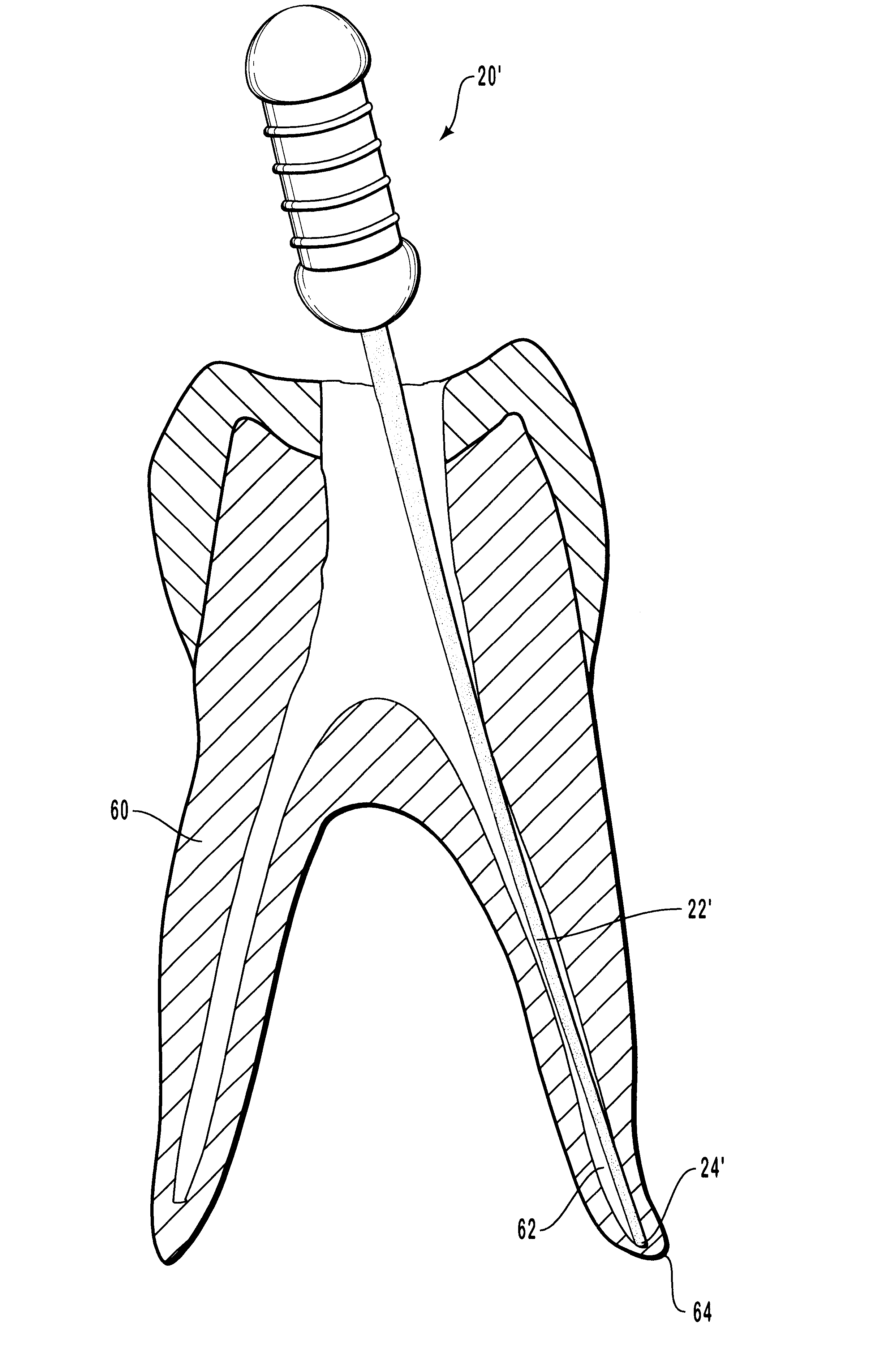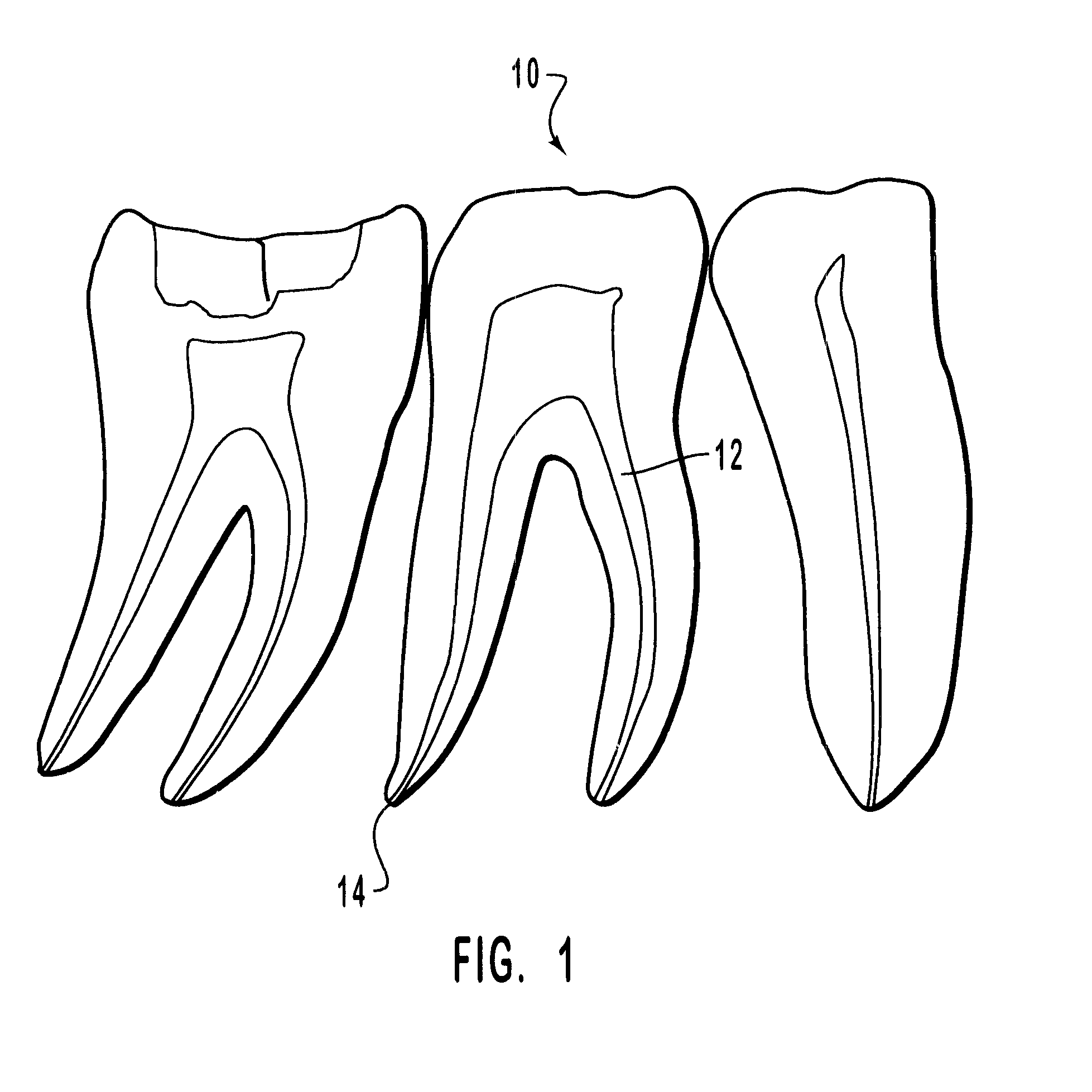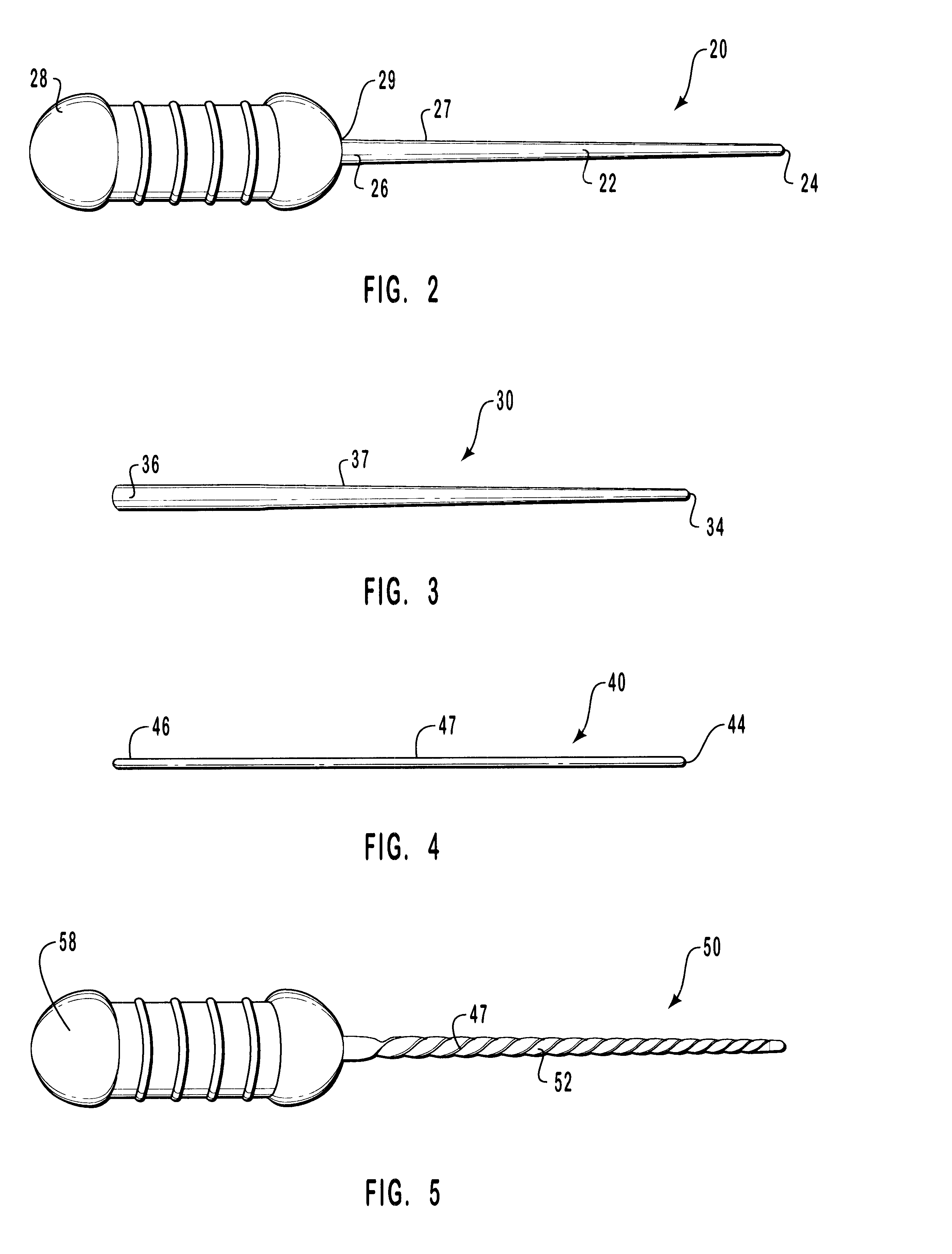Abrasive radiopaque endodontic marking tools and related methods
a radiopaque, endodontic technology, applied in the field of abrasive radiopaque endodontic marking tools, can solve the problems of necrotic tissue within the root canal, apical perforation, and apical perforation, so as to improve the quality of endodontic work, reduce the cost of manufacturing, and facilitate the insertion of elongated members.
- Summary
- Abstract
- Description
- Claims
- Application Information
AI Technical Summary
Benefits of technology
Problems solved by technology
Method used
Image
Examples
example 1
In this example, an elongate member configured to be inserted within a root canal of a tooth is formed from the following formula:
Such a tool would be expected to be highly radiopaque and to have sufficient rigidity and ductility to extend to a desired location within a root canal of a tooth. Gold is highly radiopaque, has good corrosion resistance, has a high density, and is ductile, but is generally high in cost.
example 2
In this example, an elongate member configured to be inserted within a root canal of a tooth is formed from the following formula:
Such a tool would be expected to be highly radiopaque and to have sufficient rigidity and ductility to extend to a desired location within a root canal of a tooth. Platinum has a slightly lower mass x-ray absorption coefficient than gold. Platinum has a high density (slightly higher in density than gold). Platinum is generally high in cost, often costing more than gold. Platinum has good corrosion resistance and is ductile.
example 3
In this example, an elongate member configured to be inserted within a root canal of a tooth is formed from the following formula:
Such a tool would be expected to be highly radiopaque and to have sufficient rigidity and ductility to extend to a desired location within a root canal of a tooth. Palladium is highly radiopaque, its mass x-ray absorption coefficient is much higher than gold and generally costs less than gold. Palladium also has good corrosion resistance and is ductile.
PUM
 Login to View More
Login to View More Abstract
Description
Claims
Application Information
 Login to View More
Login to View More - R&D
- Intellectual Property
- Life Sciences
- Materials
- Tech Scout
- Unparalleled Data Quality
- Higher Quality Content
- 60% Fewer Hallucinations
Browse by: Latest US Patents, China's latest patents, Technical Efficacy Thesaurus, Application Domain, Technology Topic, Popular Technical Reports.
© 2025 PatSnap. All rights reserved.Legal|Privacy policy|Modern Slavery Act Transparency Statement|Sitemap|About US| Contact US: help@patsnap.com



